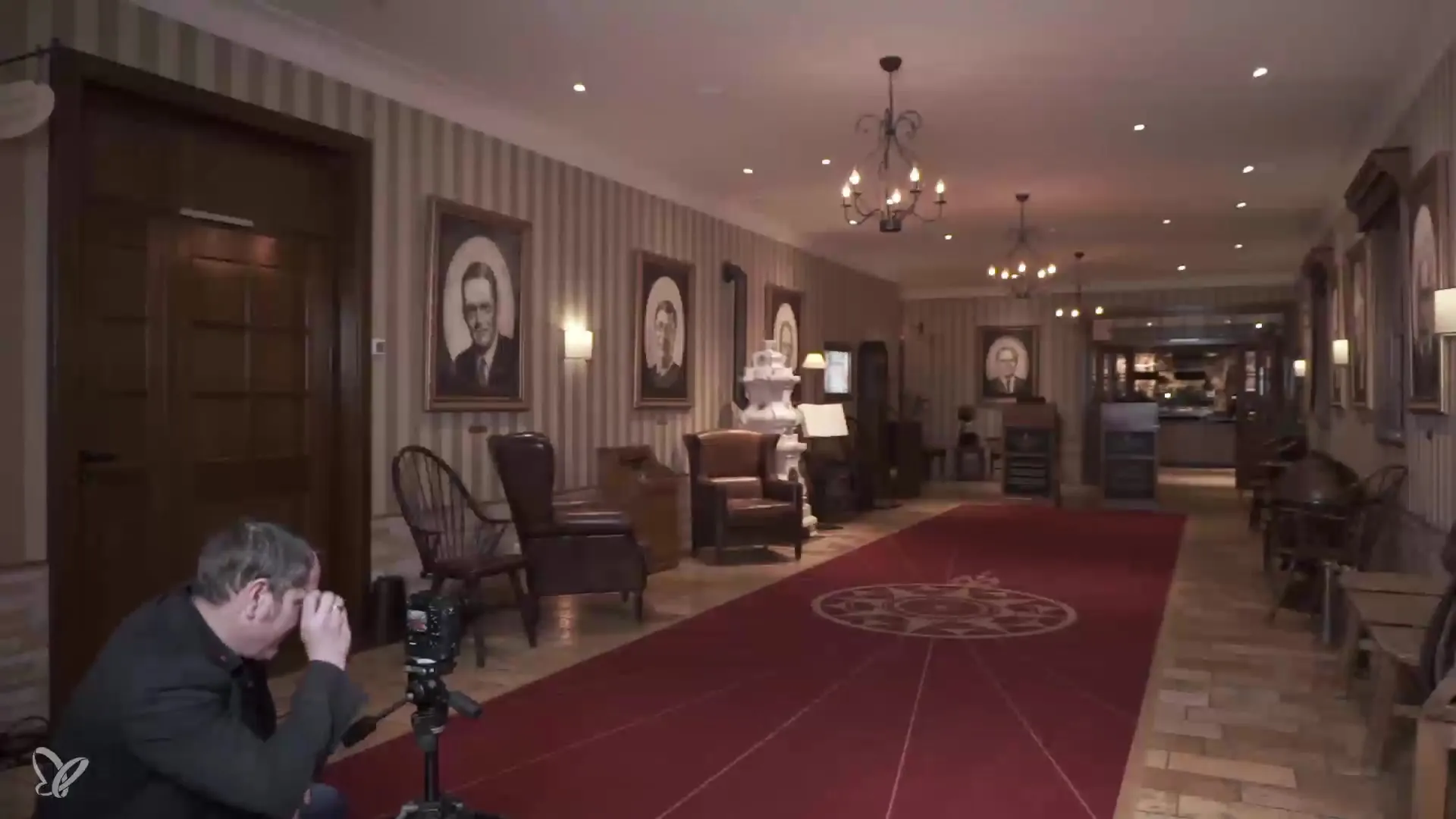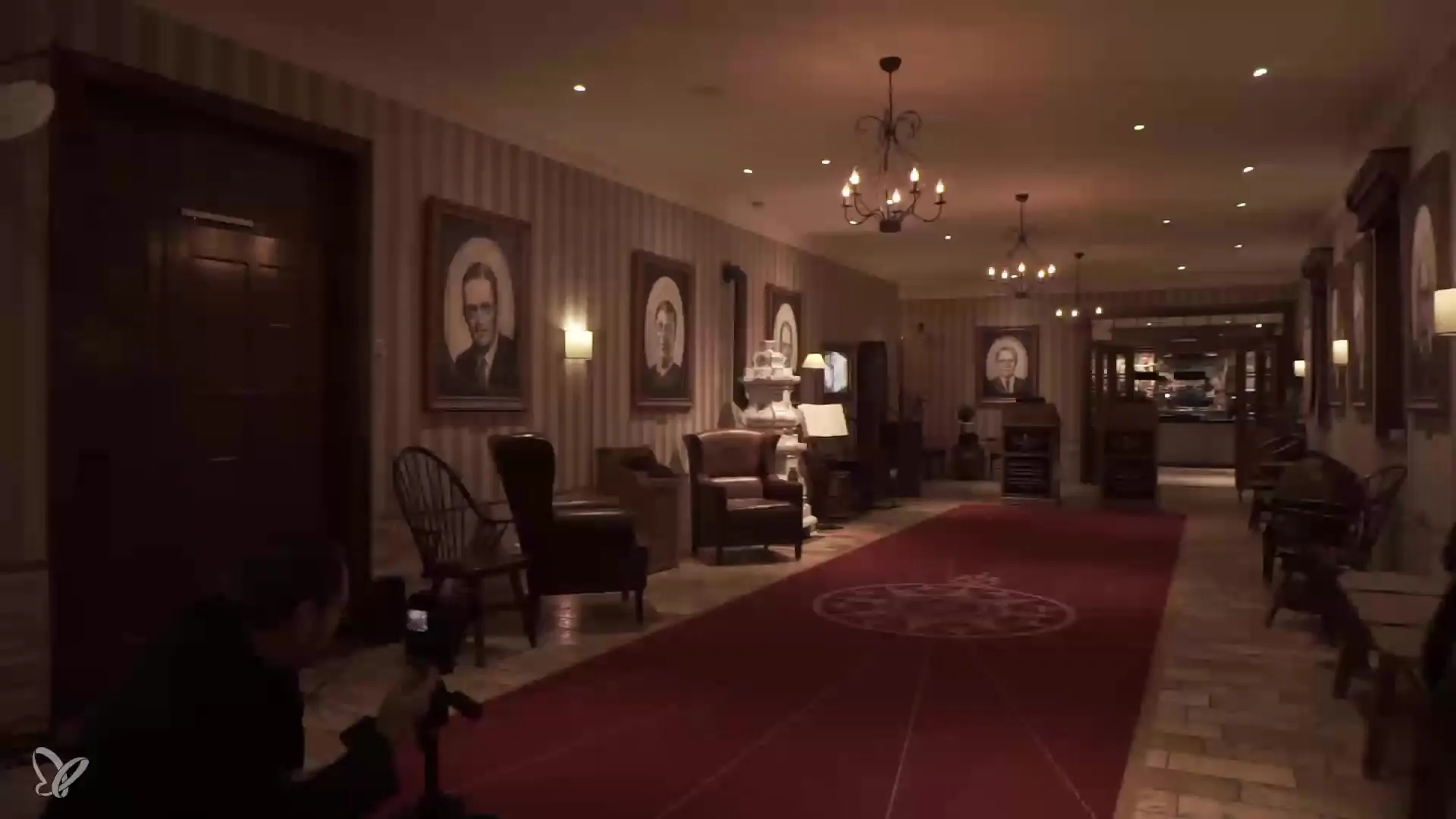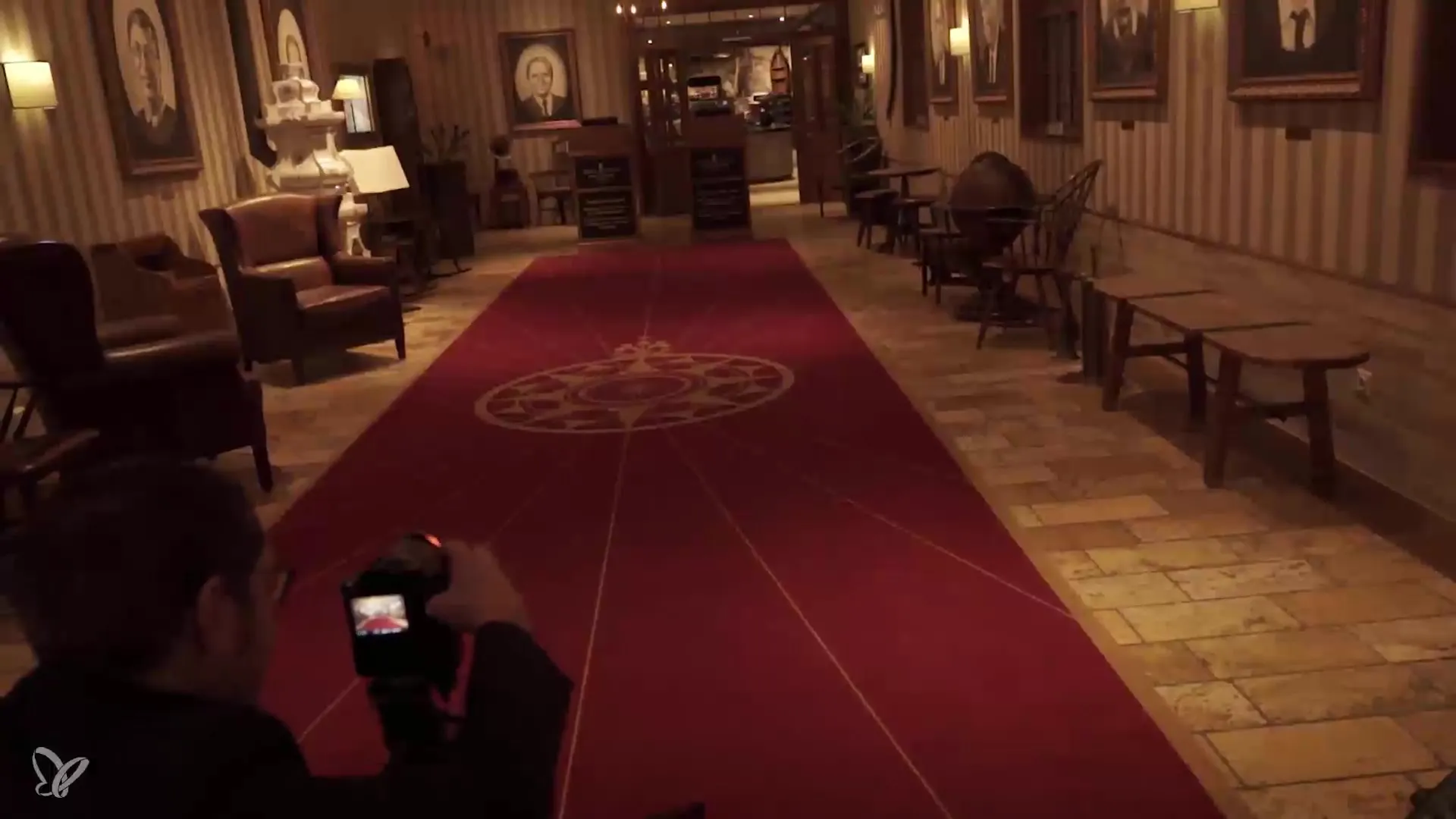Photographing interiors, especially in hotel photography, requires a good eye for detail and an understanding of perspective. It's not just about taking a beautiful picture, but also about representing the space in a way that looks inviting and appealing. In this guide, we will highlight the techniques you can use for photographing a hotel restaurant, and show you how to achieve a harmonious and symmetrical image composition through skillful perspective choices.
Key Insights To achieve the best possible results in hotel photography, pay attention to the following points:
- Choose a low camera position for an impressive texture gradient.
- Pay attention to symmetry in the room and set up your shooting area accordingly.
- Use a small aperture (e.g., f-stop 11) for maximum depth of field and image quality.
- Control reflections from light sources to avoid unwanted effects.
Step-by-Step Guide
Step 1: Find the Right Perspective
The goal of your initial shots is to highlight the passage to the restaurant. Position your camera so that guests immediately recognize they are on their way to their meal. A low camera position helps emphasize the converging lines in the space and creates an appealing composition.

Step 2: Create Symmetry
To achieve the best visual effect, ensure that all elements in the image are arranged symmetrically. Pay attention to how the reception block stands in the room and adjust its position if necessary. Take the time to ensure that everything is balanced and that the symmetry supports your image.
Step 3: Use Reference Lines
Always align your camera with the center line of the carpet. This line serves as a reference point for image composition and ensures that the image appears harmonious. Position the camera so that the center line runs through the center of your image, with objects evenly distributed on either side.
Step 4: Choose Exposure and Aperture
Now it’s time to choose your camera settings. Set your aperture to f/11 to achieve maximum depth of field and high image quality. This requires a longer exposure time, making a tripod essential. To avoid camera shake, use the self-timer to take the shot.

Step 5: Avoid Reflections
A common issue in interior shots is unsightly reflections. Be mindful of light sources that may appear in reflections on the surface of the reception block. Take a test shot and check for these reflections. If necessary, turn off the light to counteract the reflection and adjust the exposure time to compensate for the darkness.

Step 6: Take the Perfect Shot
After you’ve made all the settings and controlled the lighting, take your shot. Check the image quality and consider taking another shot to ensure that the image is not blurred. Even when using a tripod, there can sometimes be shake, so be cautious and take multiple shots if necessary.

Step 7: Admire the Result
Analyze your image after taking it. Pay special attention to the depth created by the low camera position and the use of wide-angle. The converging lines should draw the viewer's attention to the essence and convey a sense of space and symmetry.

Summary – Hotel Photography: Technique and Symmetry in Focus
Hotel photography requires a good sense of proportion and technical expertise. By properly positioning the camera, considering symmetry, and correctly choosing aperture and exposure, you can create impressive images that capture the character of the space.
Frequently Asked Questions
What is a texture gradient?A texture gradient describes the visual phenomenon where lines in an image converge, enhancing the impression of depth.
How important is the aperture in hotel photography?A small aperture, such as f/11, ensures maximum depth of field and guarantees that the entire scene is sharply focused.
Why should I use a tripod?A tripod helps avoid shake, especially with longer exposure times, and ensures a stable shot.
How can I avoid reflections in the image?Be mindful of the position of light sources and test shots without direct light to reduce reflections.
What is the best camera position for this type of shot?A low camera position that is aligned with the center line of the room creates an appealing perspective and emphasizes symmetry.


